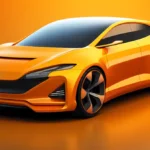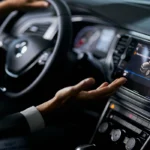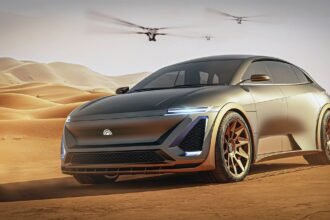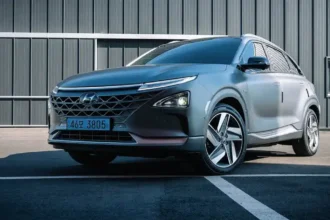Have you ever found yourself distracted while driving, fumbling with your GPS or checking your phone for navigation directions? What if there was a way to keep your eyes on the road while still accessing important information? Enter car heads-up displays (HUDs)—a revolutionary technology designed to enhance your driving experience by projecting vital data directly onto your windshield. In this article, we’ll explore the benefits of HUD, how they contribute to driving safety, improve navigation, and provide real-time information. Let’s dive into the fascinating world of heads-up displays and discover why they are becoming essential for modern vehicles.
What is a Car Heads-Up Display?
A car heads-up display is an advanced technology that projects critical driving information onto the windshield, allowing drivers to view data without taking their eyes off the road. This data can include speed, navigation instructions, fuel levels, and more. Originally developed for military aircraft, HUD technology has evolved to enhance everyday driving experiences.
How Does a HUD Work?
Car heads-up displays use various technologies to project information:
- Reflective Display: Projects information onto a clear surface, such as the windshield, using a special film or coating.
- Laser Projectors: Utilizes lasers to create a bright image that is visible even in direct sunlight.
- LED Screens: May display information on a small screen that can be positioned in the driver’s line of sight.
Benefits of Car Heads-Up Displays
1. Enhanced Driving Safety
One of the most significant benefits of HUD is improved driving safety. Traditional dashboard displays require drivers to glance down, diverting their attention away from the road. HUDs present essential information at eye level, minimizing the need for distraction. Here are some specific safety advantages:
- Reduced Eye Movement: HUDs keep the driver’s line of sight on the road, reducing the risk of accidents.
- Quick Access to Information: Drivers can quickly grasp crucial data like speed and navigation without extensive searching.
- Less Cognitive Load: With less distraction, drivers can focus better on the driving task, reducing stress and improving reaction times.
2. Improved Navigation
Navigating unfamiliar roads can be daunting. HUDs simplify this process, ensuring drivers receive clear instructions without shifting their focus. The key features that enhance navigation include:
- Turn-by-Turn Directions: HUDs provide real-time navigation prompts, ensuring drivers stay on course.
- Distance to Next Turn: Displays the remaining distance to the next maneuver, helping drivers prepare in advance.
- Lane Guidance: Some HUDs highlight the correct lane for turns, reducing confusion during complex maneuvers.
3. Real-Time Information
In today’s fast-paced world, access to real-time information is crucial. HUDs can display various data points that keep drivers informed, including:
- Speed: Instant feedback on current speed helps prevent speeding tickets and ensures adherence to speed limits.
- Weather Updates: Some advanced HUDs provide weather information, allowing drivers to adapt to changing conditions.
- Vehicle Diagnostics: Real-time alerts regarding engine performance, fuel levels, and maintenance reminders ensure optimal vehicle performance.
4. Convenience and Comfort
Beyond safety and navigation, HUDs offer convenience and comfort features that enhance the overall driving experience:
- Customizable Display: Many HUDs allow drivers to choose what information is displayed, from speed to incoming messages.
- Smartphone Integration: Connect your smartphone to receive calls, messages, and app notifications without looking away from the road.
- Voice Control: Many systems enable hands-free operation, allowing drivers to interact with their HUDs through voice commands.
5. Futuristic Technology
Integrating a heads-up display into your vehicle gives it a modern touch. As technology advances, HUDs are becoming increasingly sophisticated, featuring augmented reality capabilities that enhance user experience. These futuristic technologies may include:
- Augmented Reality (AR): Some HUDs project additional information, such as upcoming traffic conditions or hazards, directly onto the road view.
- Gesture Control: Future HUDs may allow drivers to control display features with simple hand gestures.
Comparison of Heads-Up Displays: Features and Pricing
To illustrate the advantages of car heads-up displays, let’s compare some popular models on the market, highlighting their features and pricing.
| Model | Display Type | Key Features | Price |
|---|---|---|---|
| Garmin HUD | Reflective | Navigation, speed display | $129 |
| HUDWAY Glass | Reflective | Navigation, voice prompts | $59 |
| Navdy | Built-in | Gesture control, smartphone sync | $499 |
| Bosch HUD | Laser | AR integration, diagnostics | $1,200 |
Key Takeaways
- Garmin HUD offers reliable navigation at an affordable price.
- HUDWAY Glass provides a budget-friendly option with essential features.
- Navdy stands out for its advanced features like gesture control but comes at a higher price point.
- Bosch HUD is the premium choice for those seeking cutting-edge technology and augmented reality features.
Frequently Asked Questions (FAQs)
What vehicles are compatible with HUDs?
Most modern vehicles, especially luxury and high-end models, come equipped with built-in heads-up displays. However, aftermarket HUDs are also available for older vehicles, requiring minimal installation.
How do I install an aftermarket HUD?
Installing an aftermarket HUD typically involves placing the device on the dashboard and connecting it to your vehicle’s power source. Many models come with detailed instructions for easy setup.
Are HUDs distracting while driving?
When used correctly, HUDs are designed to minimize distractions. By presenting information at eye level, they allow drivers to access data without taking their eyes off the road.
Can HUDs work with smartphones?
Yes, many heads-up displays offer smartphone integration, allowing drivers to access navigation apps, receive messages, and answer calls directly through the HUD.
What is the future of heads-up displays?
The future of HUDs includes advancements in augmented reality, gesture control, and more extensive integration with vehicle systems. As technology evolves, HUDs are expected to become standard in all vehicles.
READ MORE : Innovative AI Impact on Modern Car Design
Conclusion
In conclusion, car heads-up displays represent a remarkable advancement in automotive technology, offering a multitude of benefits that enhance driving safety, improve navigation, and provide real-time information. As we embrace these innovations, it’s essential to recognize how HUDs can transform our driving experiences, making them safer and more enjoyable.
Thank you for taking the time to read about the benefits of car heads-up displays. We encourage you to stay connected with us for more exciting updates. Join our community on social media, subscribe to our push notifications, and sign up for our newsletter to receive instant updates on the latest trends and technologies in the automotive world. Drive safely and enjoy the ride.











